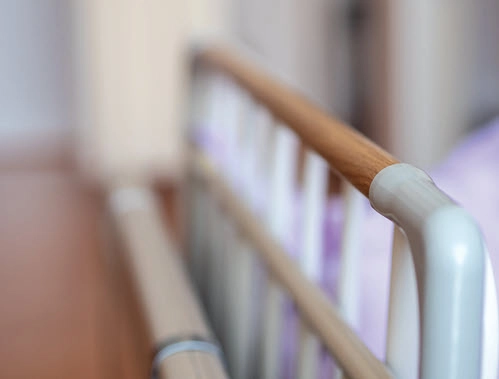Evaluate Your Bed Rails — Stat
Don’t fail to complete this basic checkup; doing so could have dire consequences. With lots of tragedy and staff turnover in long-term care right now, workers may be feeling overwhelmed by keeping up with basic care and safety, let alone mitigating the constant threat of COVID-19. Regardless of how your facility is faring on those fronts, make sure you continue to prioritize resident safety by checking some low-hanging — but potentially dangerous — fruit. Make sure you’re evaluating bedrails and other similar implements to ensure residents’ safety and avoid noncompliance with F700. “This is an important regulation to know the details of since the use or side/ bed rails can increase the risk of injury to a resident,” says Linda Elizaitis, RN, RAC-CT, BS, president and founder of CMS Compliance Group in Melville, New York. Why Aren’t Bed Rails Inherently Safe? The Centers for Medicare & Medicaid Services (CMS) mentions side rails, bed side rails, safety rails, grab bars, and assist bars in its Ftag 700, which is part of the Quality of Care regulatory group. Although these devices are ostensibly designed and used for safety and mobility purposes, they can present a real risk to residents if they are not properly installed, maintained, or used. It is “essential” that bed rails and similar devices that can cause entrapment or death are a last resort for residents, Elizaitis says. Nursing homes should try to implement any alternatives first. If an interdisciplinary care team believes that a particular resident needs bed rails to manage a medical system, facility staff should be certain that the rails are correctly installed and maintained. Some Conditions Make Rail Accidents More Likely No facility is completely immune from accidents, and some residents may have medical conditions that make bed rail use more problematic. Unsurprisingly, staffing levels can really affect bed rail safety. For example, if a resident is in their bed (with bed rails) and depends on assistance getting out of the bed to get to the bathroom and pings a staff member, but the staff member is tied up with another resident and cannot get there right away, the resident may attempt to exit the bed on their own, Elizaitis says. In this or a similar situation, bad outcomes are possible. “It is important that the potential benefits of side rail use are considered alongside the potential risks to determine what is best for the resident,” she explains. Residents who experience pain, uncontrollable body movements, agitation, delirium, confusion, acute urinary retention, fecal impaction, or hypoxia may be at greater risk for moving around or exiting a bed with rails unsafely, according to the State Operations Manual Appendix PP. Surveyors are sussing out for bed rail use and evaluating whether bed rail systems are installed, maintained, and used correctly. They’re looking to make sure that any in operation are used for medical reasons — and not staff convenience (especially because bed rails can be considered a physical restraint) and are citing facilities who do not comply. To maintain compliance, Appendix PP says facilities must To fully assess residents’ risks with side rails, make sure you focus on these areas: medical diagnosis, conditions,symptoms, and/or behavioral symptoms; size and weight, sleep habits, medication(s), acute medical or surgical interventions; underlying medical conditions;existence of delirium; ability to toilet self safely; cognition; communication; mobility (in and out of bed);and risk of falling as well as which alternatives to bed rails the nursing home tried first and why those alternatives failed. Long-Time Use Doesn’t Guarantee Safety Like most aspects of a healthcare business, bringing in an auditor of some kind can help you see what you may miss in the day-to-day work on the floor. Elizaitis says that her company’s consultants audit bed rail use at their client facilities, and the consultants routinely find issues that could lead to serious harm or even the death of a resident. “Even with appropriate bed rails that are compatible with the bed and mattress being used, and are appropriately used, there is still a potential increased hazard for certain individuals. The risk of entrapment also needs to be considered,” she says.


